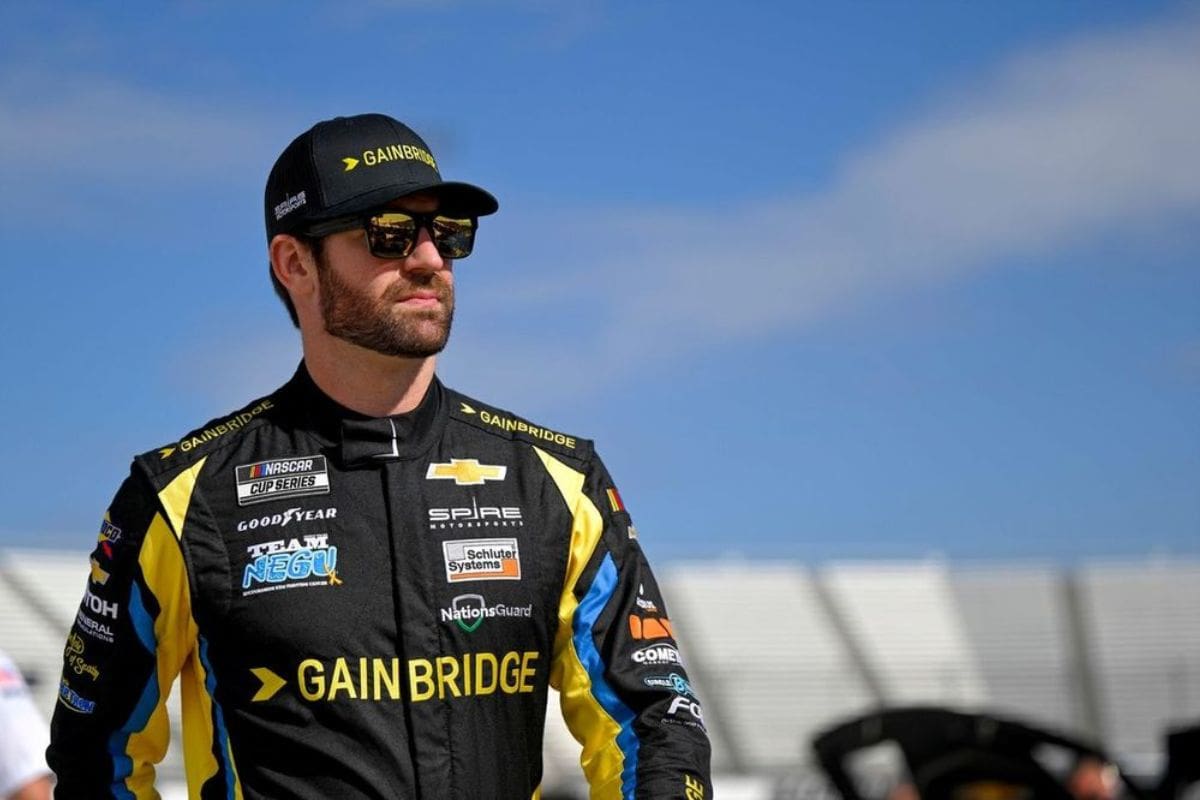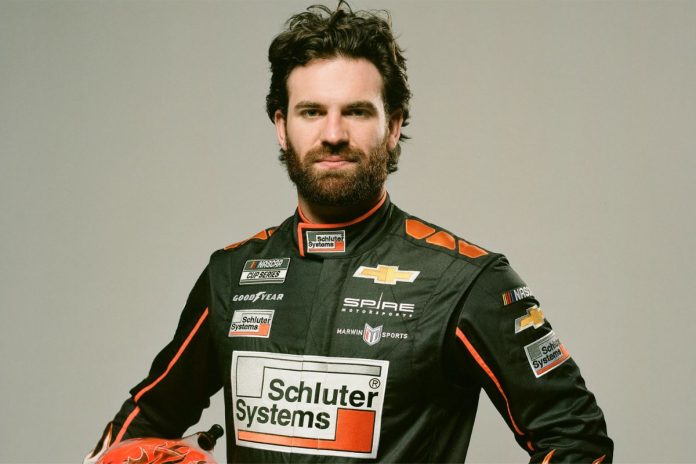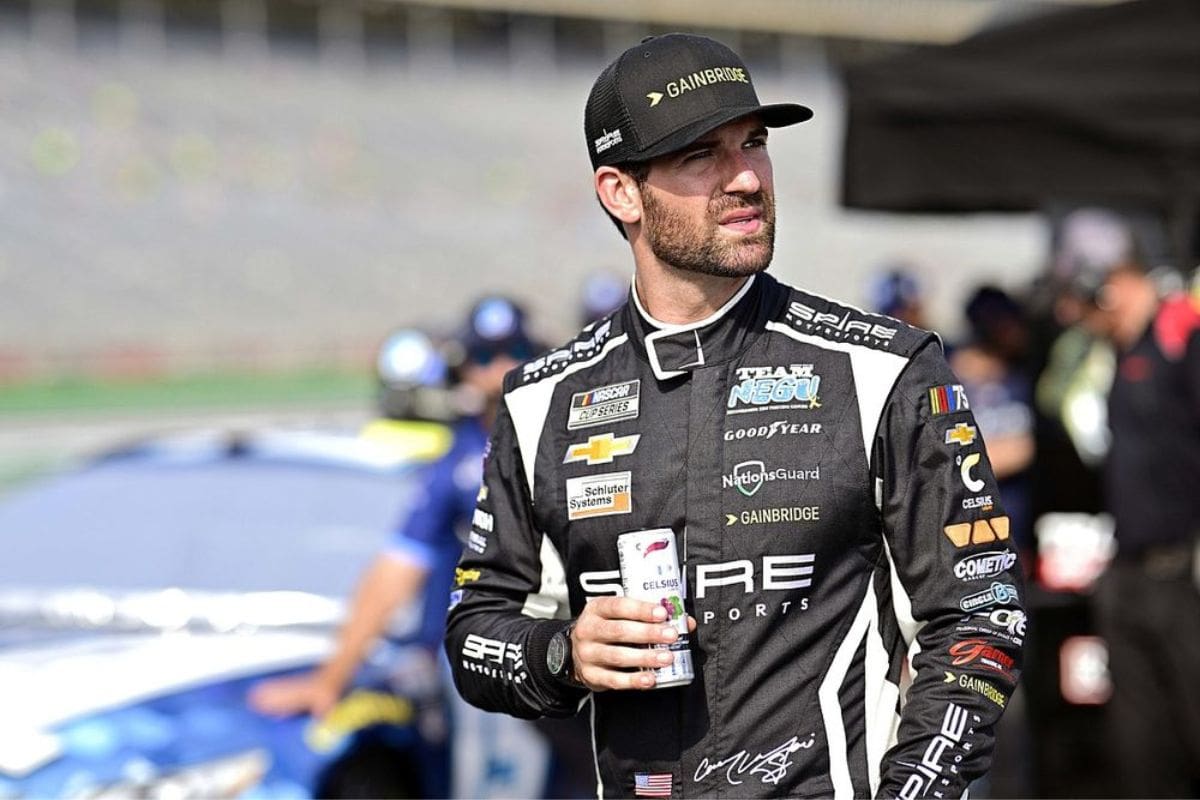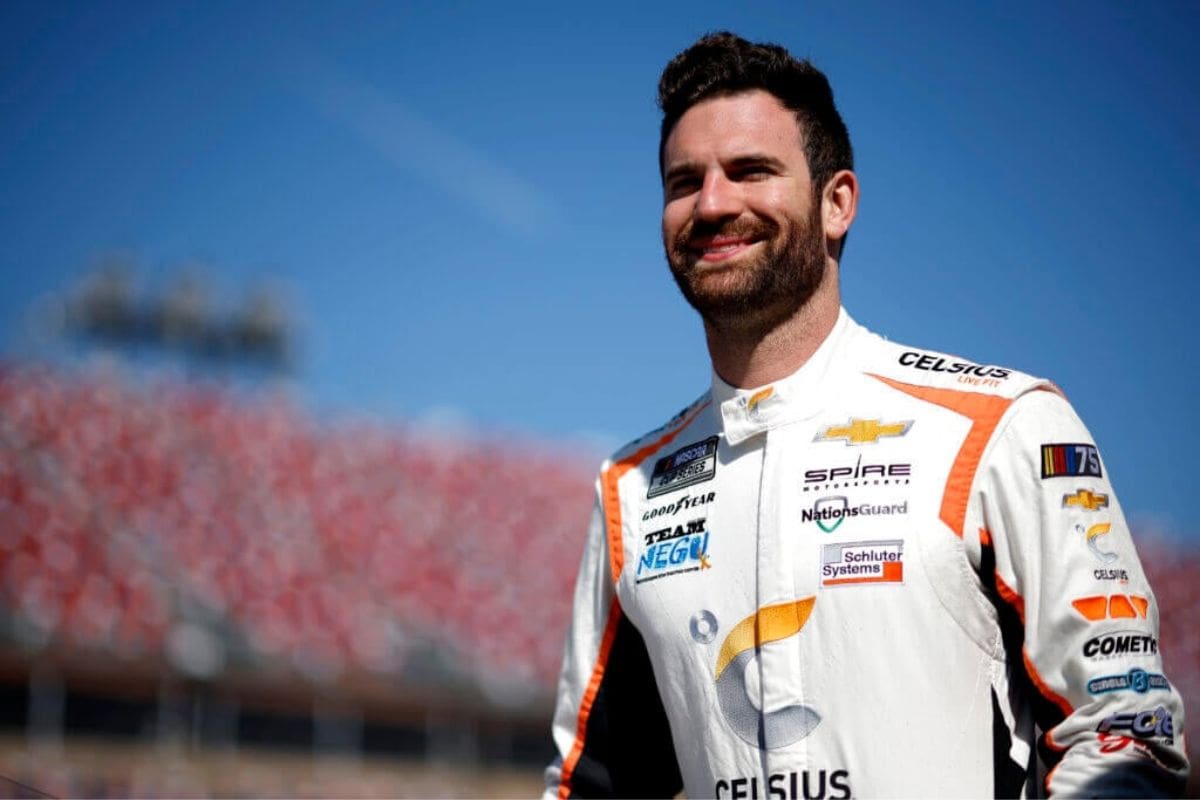Corey LaJoie Talladega’s Crash: The recent incident involving Corey LaJoie at Talladega Superspeedway, where he crossed the finish line in a remarkable airborne finish, highlights a crucial discussion point in NASCAR’s safety and race dynamics. The crash brought to the forefront the unpredictable nature of aerodynamic lifts in high-speed racing environments. As we analyze the footage, it becomes essential to question whether current safety measures and vehicle designs adequately address the rare but potentially fatal scenarios of cars becoming airborne.
Key Takeaways
- Corey LaJoie’s car was airborne as he crossed the finish line at the GEICO 500.
- This marked only the second time in NASCAR history a car finished a race in such a dramatic airborne state.
- LaJoie’s No. 7 Chevy lifted due to intense aerodynamic forces during a chaotic last-lap wreck.
- Despite the crash, LaJoie managed to finish the race, showcasing the car’s durability and safety features.
- Footage captures the remarkable moment, highlighting the unpredictability and excitement of restrictor plate racing at Talladega.
The Wretched Finish at Talladega
The GEICO 500 at Talladega Superspeedway concluded in a chaoticly as a late-race battle triggered a massive wreck, overshadowing the preceding laps’ lack of action. This climactic turn of events began when Brad Keselowski and Michael McDowell engaged in a fierce duel for supremacy as the race neared its end.
Analyzing the dynamics of the incident, it’s evident that the drivers were pushing their limits within the high-stakes environment of restrictor plate racing, where the margin for error is notoriously slim. Keselowski, a seasoned veteran at Talladega, was executing aggressive but calculated tactics to position himself favorably. McDowell, on the other hand, responded with equal tenacity but perhaps less caution which led to his fateful spin.
The resulting chaos was not merely a spectacle of twisted metal and tire smoke; it was a stark reminder of the thin line between strategic brilliance and catastrophic overreach in NASCAR. As McDowell lost control, the tightly packed field had little room to navigate, covering the inherent risk of pack racing at such high speeds and close quarters.
In the aftermath, while Tyler Reddick skillfully navigated through the smoke and debris to clinch victory, the focus remained intensely on the multi-car wreck that had unfolded.
LaJoie’s Wild Ride
Amid the chaos that enveloped the final laps at Talladega, Corey LaJoie’s harrowing ordeal stood out as his No. 7 Chevy endured a perilous trek to the finish line. As the race approached its climax, LaJoie found himself in a precarious situation that tested the limits of both driver and machine. His vehicle, severely compromised, exhibited remarkable resilience in the face of overwhelming odds.
“I’m good. That was the first slip of my career in a big car, so 10 out of 10 don’t recommend it. Pretty wild ride, just never could quite get it in the right spot, at the right time at the end. And then you just you’re just waiting to pile them up.”-(COREY)
The dynamics of LaJoie’s Chevy throughout the tribulations highlight several critical aspects:
Corey LaJoie went for a wild ride. pic.twitter.com/Pvnpb1xSFY
— FOX: NASCAR (@NASCARONFOX) April 21, 2024
- Aerodynamic Compromise: The No. 7 car was thrust sideways into the fences, severely disrupting the aerodynamic profile vital for stability at high speeds. This resulted in an uncontrollable spin that saw the car momentarily lifted onto two wheels.
- Structural Integrity: Despite the violent contact with the fences and the subsequent drag across the track, the structural strength of the Chevy was pivotal in preventing a complete disintegration, which could have led to more severe consequences.
- Driver Skill and Response: LaJoie’s ability to manage his vehicle in such extreme conditions emphasizes his skill and quick reflexes. Maintaining control in a semi-airborne state at high speeds requires not only courage but a high level of expertise.
- Safety Measures: The incident puts a spotlight on the safety precautions inherent in NASCAR vehicles. The roll cage and safety harness likely played significant roles in protecting LaJoie during the multiple impacts and eventual rollover before the car landed back on all four wheels.
LaJoie’s Remarkable Finish
In a remarkable display of resilience, Corey LaJoie crossed the finish line at Talladega in a manner rarely seen, with his car airborne and devoid of all wheels touching the ground. This extraordinary finish marks only the second occurrence in NASCAR history where a driver completed a race in such a dramatic airborne state.
Analyzing LaJoie’s finish, several key factors emerge that contributed to this spectacular event. Firstly, the aerodynamic forces at play during high-speed collisions can unpredictably lift a car. Moreover, the structural integrity of LaJoie’s vehicle was compromised, yet sufficiently maintained to prevent a complete breakdown before crossing the finish line.
LaJoie highlight a significant aspect of NASCAR: the unpredictable and often perilous nature of high-speed racing. LaJoie’s ability to steer his severely damaged vehicle across the finish line not only demonstrates his skill and resolve but also emphasizes the unwavering pursuit of completion, regardless of the circumstances.

Lack of Consistency Hampering LaJoie’s Progress
Despite a dramatic finish at Talladega, Corey LaJoie’s season continues to be blocked by a lack of consistency, impacting his general progress in the NASCAR series. With an 18th-place finish at Talladega, it’s evident that while he can still pull through challenging races, the general trajectory of his season does not align with the peaks he occasionally achieves.
- Inconsistent Finishes: LaJoie’s results have fluctuated widely, with today’s race being only his third-best finish in the initial ten races of the season.
- Previous Success at Talladega: Historically, Talladega has been a favorable track for LaJoie, which makes his recent performance there all the more disappointing.
- Impact of Crashes: Frequent accidents have affected LaJoie’s ability to maintain momentum throughout the season. Each incident not only influences a single race but seems to have a lingering impact on subsequent performances.
- Comparison to Peers: When juxtaposed with competitors in similar equipment, LaJoie’s results suggest a gap in either strategy or execution, which is critical to address for improvement.
Rethinking Strategy
To revive Corey LaJoie’s faltering season, a thorough overhaul of strategic approaches by Spire Motorsports is vital. As the team explores the second quarter of the racing calendar, the need for a redefined strategy becomes increasingly evident, not just to salvage this season but to set a precedent for future campaigns.
A key area of focus should be on improving the car’s adaptability to different tracks. LaJoie’s performance variance across different types of circuits suggests potential misalignments in car setup and race-day strategy.
Moreover, enhancing communication within the team is crucial. This includes better coordination between the pit crew, engineers, and LaJoie himself. Real-time data transmission and analysis during races should be optimized to allow for quicker strategic decisions that could give LaJoie an edge over his competitors.
News in Brief: Corey LaJoie Talladega’s Crash
Corey LaJoie’s airborne finish at Talladega highlights key aspects of NASCAR’s safety protocols and aerodynamic challenges in restrictor plate racing.
While the spectacle showcased both the dangers and the skill required in motorsport, it also emphasized the crucial role of advanced safety measures that protected the driver despite extreme conditions.
Further analysis and strategic adjustments are crucial to improve consistency and performance, ensuring that such incidents are contained without compromising the competitive integrity of the sport.
Our Reader’s Queries
Q. Has Corey LaJoie ever won a NASCAR race?
A. Unfazed by the challenges of climbing the ranks, LaJoie displayed a tenacious spirit as he immersed himself in NASCAR’s top developmental series. This journey included the ARCA Menards Series East, where he accumulated six impressive victories, and the prestigious ARCA Menards Series itself, where he demonstrated his prowess against the finest competitors in what is now under NASCAR ownership.
Q. How is Corey LaJoie related to Randy LaJoie?
A. Randall Joseph LaJoie, born on August 28, 1961, boasts a rich history as a NASCAR Busch Series driver, which is now recognized as the Xfinity Series. His notable achievements include clinching the championship titles in both 1996 and 1997. Beyond his own racing success, LaJoie’s legacy extends to his children, Casey and Corey LaJoie, who have followed in his footsteps as racers. Hailing from Norwalk, Connecticut, LaJoie’s impact on the racing world reverberates from his hometown to the track.
Q. What is Corey LaJoie’s best finish?
A. Corey LaJoie achieved a career milestone at Atlanta Motor Speedway on Sunday, delivering his strongest finish yet in the NASCAR Cup Series. Piloting the Spire Motorsports No. 7 Chevrolet, LaJoie crossed the finish line in an impressive fourth place. This marked his second top-five finish, surpassing his fifth-place performance from last March’s race at the 1.54-mile superspeedway. LaJoie’s notable accomplishment underscores his growing presence and competitiveness in the elite ranks of NASCAR.
Q. Who sponsors Corey LaJoie in NASCAR?
A. USANA made its inaugural appearance as a primary sponsor alongside Spire Motorsports, adorning Corey LaJoie’s No. 7 Camaro. The partnership between USANA, a renowned figure in global nutrition, and Spire Motorsports, solidified as the Official Supplement Provider, marked a significant moment for both entities. The collaboration shows USANA’s commitment to supporting high-performance athletes like LaJoie in the competitive realm of motorsports.
ALSO READ: Corey LaJoie’s Major Sponsorship Renewal: Inside the Thrilling Deal for 2024




